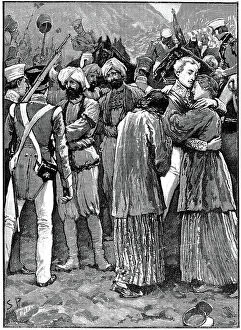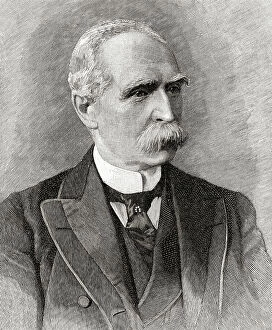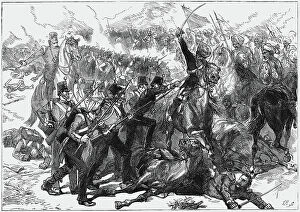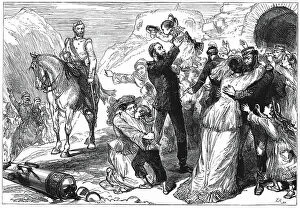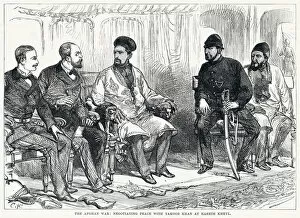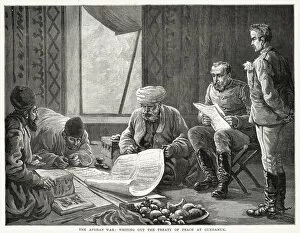Anglo Afghan Collection
"Unveiling the Anglo-Afghan Legacy: A Journey through History" Step into the enchanting Forbury Gardens in Reading, Berkshire
All Professionally Made to Order for Quick Shipping
"Unveiling the Anglo-Afghan Legacy: A Journey through History" Step into the enchanting Forbury Gardens in Reading, Berkshire, and you'll be greeted by the majestic Maiwand Lion. This iconic statue stands as a symbol of valor and sacrifice, commemorating the brave soldiers who fought during the Anglo-Afghan War. As we delve deeper into history, an engraving captures our attention – "The Sortie of the Garrison of Jelalabad, 1842. " It transports us back to a time when British forces valiantly defended their position against Afghan insurgents. The intensity of this battle is palpable even centuries later. In another masterpiece titled "Lady Florentia Sale, on retreat from Kabul, " we witness the haunting aftermath of The Kabul Disaster in 1842. Brushstrokes depict Lady Sale's resilience amidst chaos and despair as she navigates her way through treacherous terrain. Moving forward in time, an engraving labeled "Cabul, 1842" reveals a city ravaged by war. Its streets bear witness to destruction and turmoil that shaped Afghanistan's history forever. Yet amidst these dark chapters lies hope for peace. In one captivating image featured on The Graphic's cover, we see negotiations taking place between Mohammad Yaqub Khan and British officials – marking an end to the Afghan War. A significant moment unfolds before our eyes as Major Cavagnari seals the treaty at Gandamak on May 26th, 1879. This historic event solidifies a fragile peace between two nations scarred by conflict but yearning for stability. The signing ceremony at Gundamuk further cements this newfound accord while capturing hearts with its symbolism of unity amid past animosities. Words penned onto paper hold immense power in shaping destinies and forging lasting friendships. However, not all tales from this era are centered around diplomacy; some shed light on unexpected dangers faced by archaeologists.



